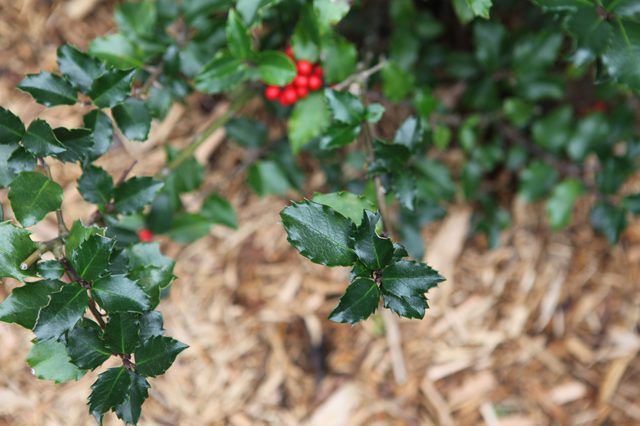Bulbs
Flower Basics
Flower Beds & Specialty Gardens
Flower Garden
Garden Furniture
Garden Gnomes
Garden Seeds
Garden Sheds
Garden Statues
Garden Tools & Supplies
Gardening Basics
Green & Organic
Groundcovers & Vines
Growing Annuals
Growing Basil
Growing Beans
Growing Berries
Growing Blueberries
Growing Cactus
Growing Corn
Growing Cotton
Growing Edibles
Growing Flowers
Growing Garlic
Growing Grapes
Growing Grass
Growing Herbs
Growing Jasmine
Growing Mint
Growing Mushrooms
Orchids
Growing Peanuts
Growing Perennials
Growing Plants
Growing Rosemary
Growing Roses
Growing Strawberries
Growing Sunflowers
Growing Thyme
Growing Tomatoes
Growing Tulips
Growing Vegetables
Herb Basics
Herb Garden
Indoor Growing
Landscaping Basics
Landscaping Patios
Landscaping Plants
Landscaping Shrubs
Landscaping Trees
Landscaping Walks & Pathways
Lawn Basics
Lawn Maintenance
Lawn Mowers
Lawn Ornaments
Lawn Planting
Lawn Tools
Outdoor Growing
Overall Landscape Planning
Pests, Weeds & Problems
Plant Basics
Rock Garden
Rose Garden
Shrubs
Soil
Specialty Gardens
Trees
Vegetable Garden
Yard Maintenance
How to Trim Overgrown Holly Trees
How to Trim Overgrown Holly Trees. Hollies (Ilex spp.) can come back from the dead -- or seemingly dead -- old wood at the bases of their stems. As that wood is only dormant, it is possible to cut the stems almost all the way to the ground without killing them. Such drastic pruning is best limited to southern climates. In colder zones, reduce the...
Hollies (Ilex spp.) can come back from the dead -- or seemingly dead -- old wood at the bases of their stems. As that wood is only dormant, it is possible to cut the stems almost all the way to the ground without killing them. Such drastic pruning is best limited to southern climates. In colder zones, reduce the size of your overgrown holly gradually to cause less stress to both the plant and yourself. Most hollies actually are multi-stemmed shrubs, occasionally pruned into tree shape. They vary in hardiness from U.S. Department of Agriculture plant hardiness zones 3 to 11.
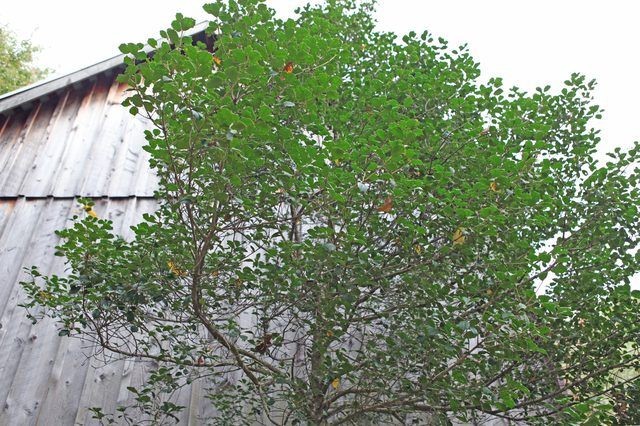
Things You'll Need
Bypass pruning shears
Lopping shears
Pruning saw
Pine oil cleaner
Bucket
Step 1
Dunk the blades of your pruning tools for at least five minutes in a disinfecting solution before using them. You can mix up such a solution in a bucket by combining 1 part pine oil cleaner to 3 parts of water. Rinse the tools in clean water before you begin pruning.
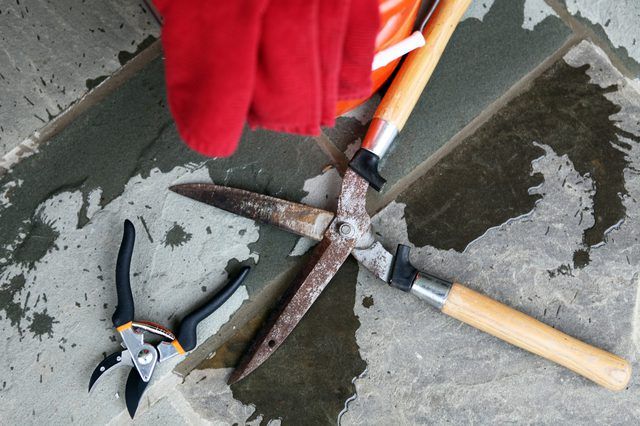
Step 2
Cut all of the stems of your holly tree back to within 6 to 12 inches of the ground in late winter or early spring. Make each cut at a slight angle to allow rainwater to drain off easily. Use bypass pruning shears for branches up to 1/2 inch in diameter, long-handled lopping shears for those from 1/2 to 1 1/2 inches, and pruning saws for larger branches.
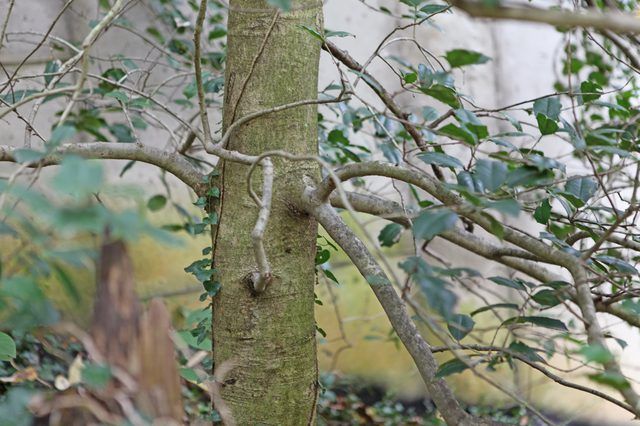
Step 3
Snip off the tips of the new shoots with your pruning shears once they reach 6 to 12 inches, to force them to branch out. Vary the height of the shoots for a more natural look, and make each cut at a slight angle just above an outfacing bud.
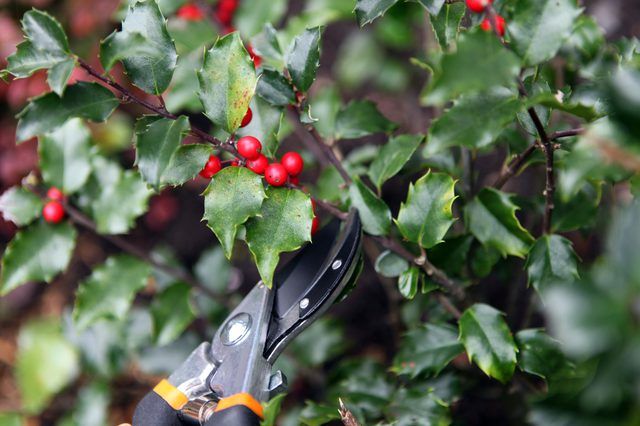
Step 1
Cut back one-third of the oldest and tallest stems of your holly tree to within 6 to 12 inches of the ground in early spring. Choose stems that are evenly spaced throughout the tree to prevent a lopsided look.

Step 2
Prune an additional one-third of the stems back the following spring. Also, snip the tips off the new growth from the previous year, cutting each shoot back to just above an outfacing bud.
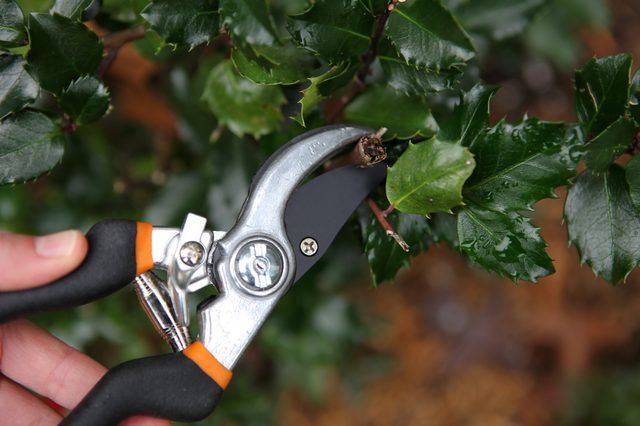
Step 3
Lop the remaining one-third of old stems off in the third year and remove the tips from the previous year’s new shoots. Your overgrown holly has now been entirely replaced with new growth, but you can continue to cut out the oldest and tallest one-third of shoots each spring to keep the shrub within bounds.
